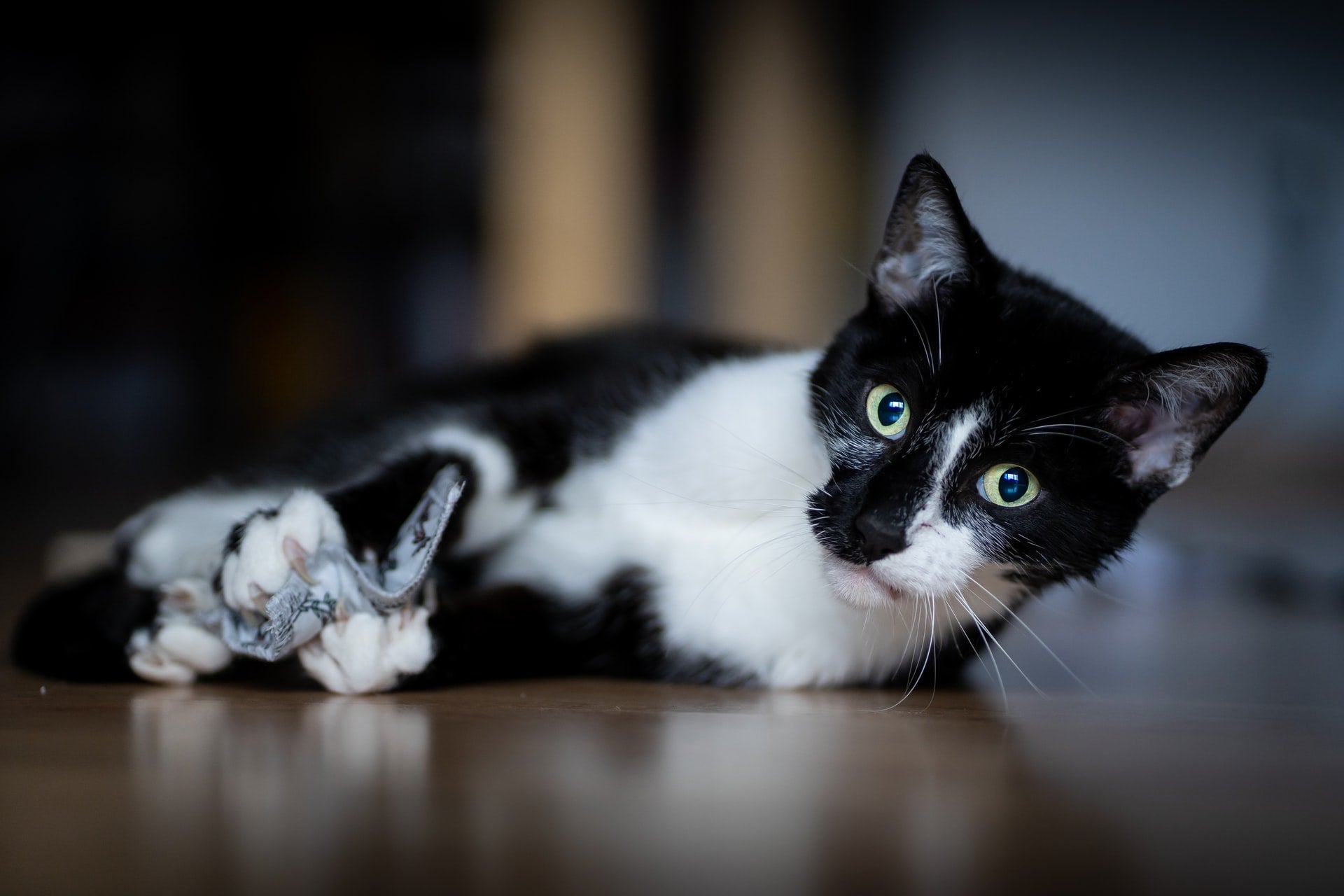Cats are known for their independence and low-key lifestyle, making them relatively low-maintenance pets (especially when compared to their canine counterparts). With all of that time napping and lying around the house, how bored can a cat really get?
The fact is that cats can and do get bored. After all, feline life can be pretty monotonous. So how can you tell if your kitty needs more fun cat activities in her life? Read on to learn how to tell if your cat is bored, along with some of our favorite boredom-busting tips.
Why Do Cats Get Bored?
While indoor cats tend to have longer lifespans than outdoor cats, that house-bound lifestyle does come with a downside: indoor cats get bored much more easily than outdoor adventurers.
Cats are natural predators who love to chase, hunt, and pounce on any potential “prey” (including toys and playmates). If your kitty isn’t getting enough outlets for her prey drive, she can end up feeling bored.
Cats are also curious and love having new things to explore. As much as they love their routines, they also need a variety of sights, sounds, and experiences to keep things interesting.
Basically, if your cat isn’t getting enough social interaction or physical and mental stimulation, there’s a good chance she’s feeling bored most of the time. Plus, excess energy and a lack of fun cat activities can lead to a badly-behaved or even anxious cat.

Signs Your Cat is Bored
Your cat can’t simply tell you she’s bored; she also can’t cure her boredom by binging TV shows or making fun plans with her friends as humans do! Instead, you’ll need to pay some extra close attention to your cat’s behavior to tell if she’s feeling bored or otherwise unhappy.
Common signs of a bored cat include:
-
Overgrooming, or other repetitive behaviors such as chewing or biting skin and fur
-
Antagonizing other animals in the household
-
A lack of curiosity, or decreased interest in typically exciting events
-
Lethargy
-
Overeating
-
Weight gain (from all that inactivity and snacking!)
- Destructive behaviors such as scratching furniture, pulling at curtains, chewing computer cords, or seeking negative attention by breaking known rules
Before you determine that boredom is the culprit of your cat’s behavior, talk to your vet to rule out any potential health issues. After all, some common signs of boredom can also be signs of physical or mental health conditions.
Keep your cat feeling happy and healthy with PetHonesty’s Daily Essentials Cat 3-Pack, which includes:
- Digestive Probiotics+ Powder to promote healthy digestion
- Lysine-Immune Health+ Powder to support a strong immune system
-
Wild Alaskan Salmon Oil for joint, heart, skin, coat, brain, and overall health

Fun Cat Activities to Keep Your Kitty Occupied
A combination of physical, mental, and social stimulation is important when it comes to a content kitty. Fortunately, both you and your kitty can have some fun as you find new ways to keep life interesting around the house.
Our favorite cat boredom busters include:
-
A variety of interactive toys to choose from. To keep the novelty from wearing off, keep some toys in a hidden hiding spot and rotate them out every so often.
-
Making routine activities more interesting. Your cat has to eat, so why not turn mealtimes into a fun activity? Place some dry food into a puzzle feeder, or create a DIY treat puzzle out of a toilet paper roll or egg carton for a toy with a tasty reward.
-
Cat videos. Your cat may not enjoy watching TV shows the way we do, but she can certainly benefit from visuals on a screen. An online search will yield several results for hours-long videos of birds, squirrels, fish, and more, specifically created for your cat’s entertainment.
-
Vertical, horizontal, and interactive scratchers. Scratching is a feline instinct: it’s an emotional outlet, a way to file her nails, and a form of entertainment and exercise. Make sure your cat has plenty of sturdy scratching posts to choose from—otherwise, she might turn your couch into her new favorite scratcher!
-
Plenty of high places to climb. Cat trees, wall shelves, and window perches can all offer your kitty an opportunity to climb and explore. This is especially important if you have a dog and your cat craves her own out-of-reach space.
-
A comfy spot to perch by a window and watch the outside world. When the weather is nice, you can even open a window (as long as you have a screen) so your cat can smell and hear what’s going on outdoors.
-
If you have the means, it may be worth considering a second cat so your kitty has a playmate, especially if you spend a lot of time away from the house during the day. Of course, this isn’t a decision to be made lightly, so make sure you and your kitty are fully prepared to bring another pet into your home.
- Plenty of attention and quality time. Try to designate a chunk of time each day to quality time with your kitty. Spend time playing together with toys such as cat wands and lasers, play a modified version of hide-and-seek, and, of course, a good amount of cat cuddles!
Sources:
https://pets.webmd.com/cats/features/keeping-indoor-cat-happy#1
https://daws.org/signs-of-boredom-in-your-cat/
https://be.chewy.com/behavior-pet-body-language-6-signs-your-cat-is-bored/
https://www.rover.com/blog/is-my-cat-bored/













